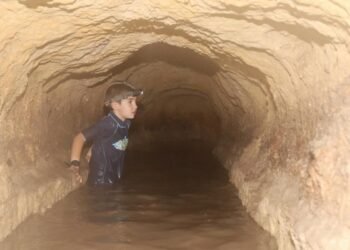Archaeologists from the Margulan Institute of Archaeology have discovered several rock art clusters in the Almaty region of Kazakhstan as part of the Serektas Archaeological Expedition.

This expedition, which took place from June 1 to June 30, 2024, was part of the larger project “Ancient and Medieval Almaty: Research and Preservation of Archaeological Heritage,” and was led by Dr. Albina Yerzhanova.
The team focused their efforts on the Serektas River valley, located 17 kilometers northeast of the village of Karabastau in the Zhambyl district. Their work included both excavations and reconnaissance surveys of the surrounding landscape.
Among their findings were several small campsites dating back to the late Middle Ages and Modern period, as well as five clusters of rock art. Notably, these rock art clusters included a depiction of a yurt and a Kazakh tribal tamga—an abstract seal or stamp used by Eurasian nomads for livestock branding, which was common among nomadic tribes during Classical Antiquity and the Middle Ages.
At the Serektas-2 settlement, the archaeologists unearthed 727 fragments of Dongal-type ceramics and other pottery, 83 stone tools, and 38 bone artifacts made from cattle and small ruminants. They also discovered a bronze object on the floor of a dwelling, along with three iron nails threaded with cattle hair.
Meanwhile, at the Serektas-1 site, the team excavated a 6-by-4-meter structure oriented northwest-southeast. This site yielded a substantial collection of osteological material, including approximately 200 bone fragments from domestic and possibly wild animals. Over 60 ceramic pieces, spindle whorls, bone awls, iron fragments, glass, and various stone tools, such as grinders, polishers, and pestle-like stones, were also found.
These findings highlight the area’s significance as a hub of human activity and cultural development over the centuries.























